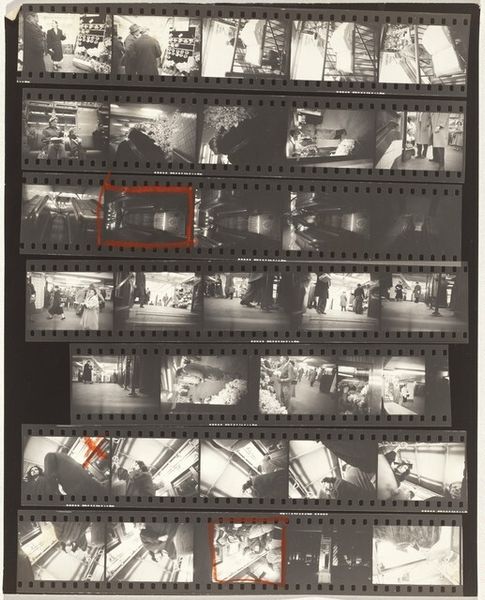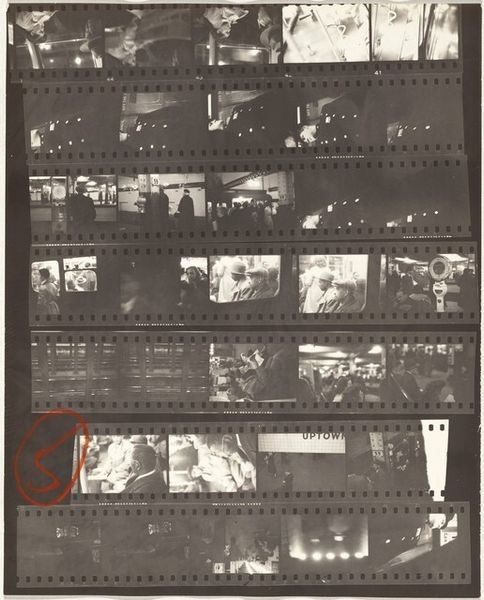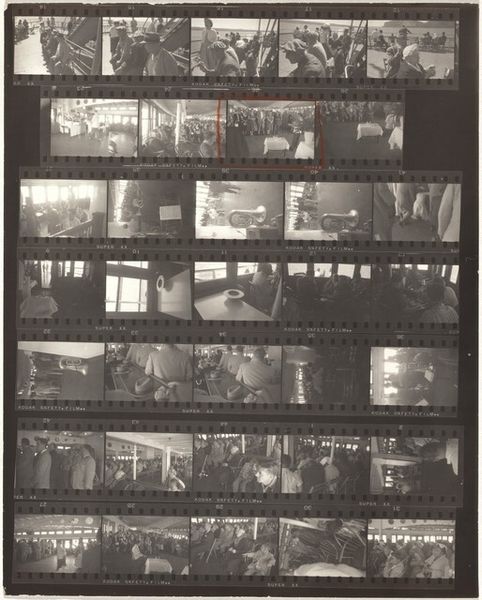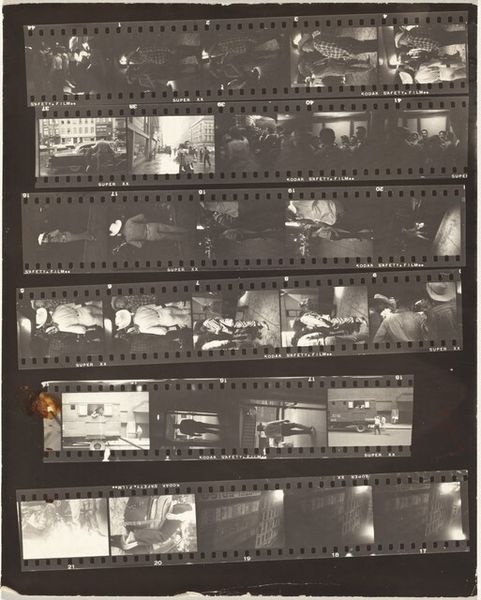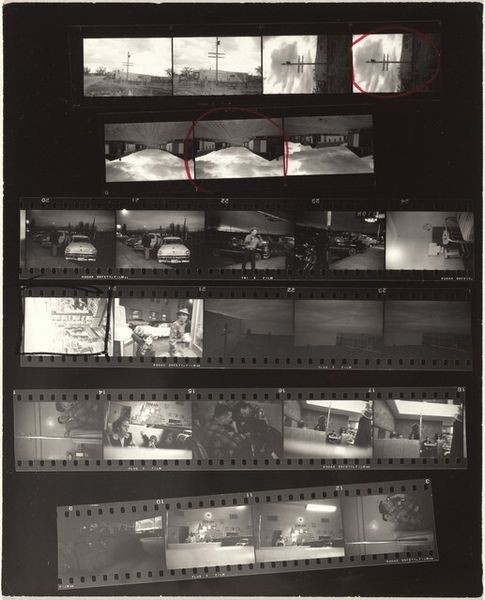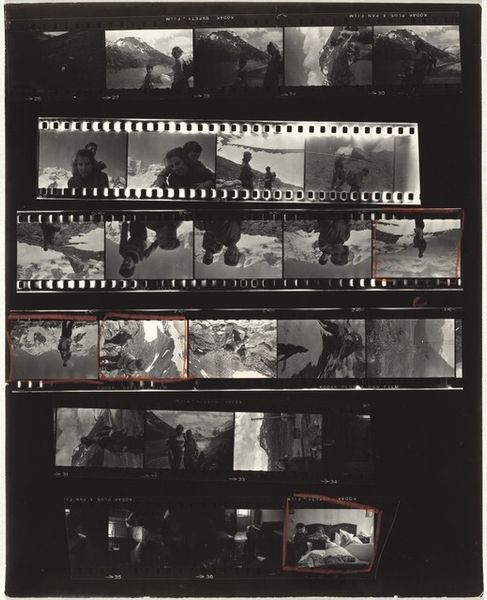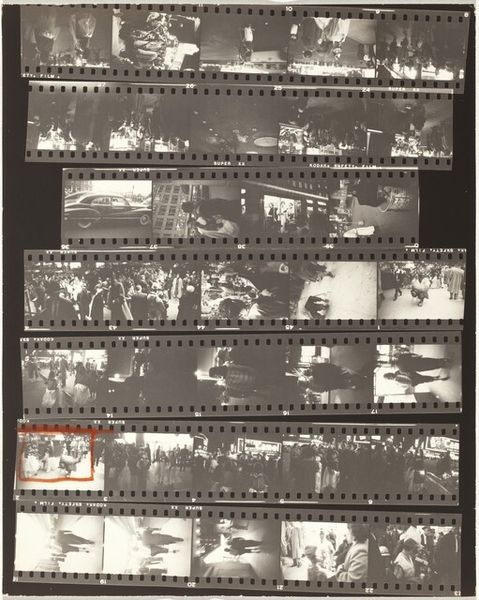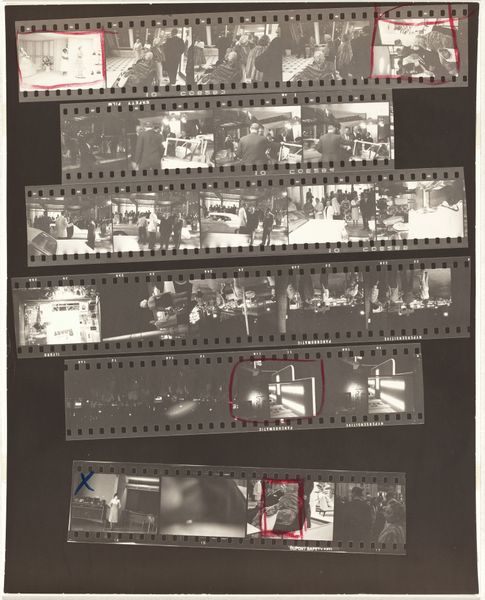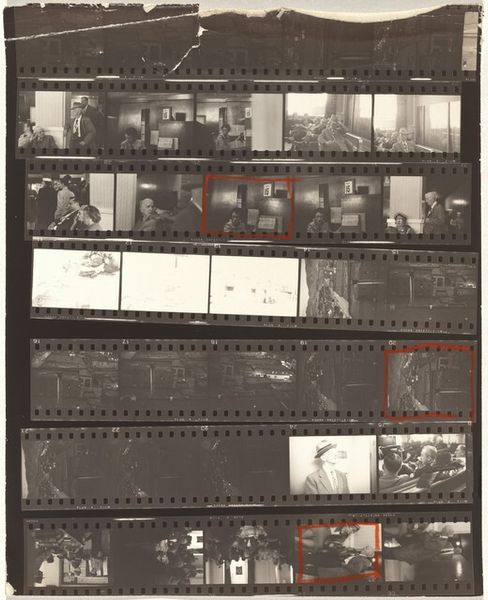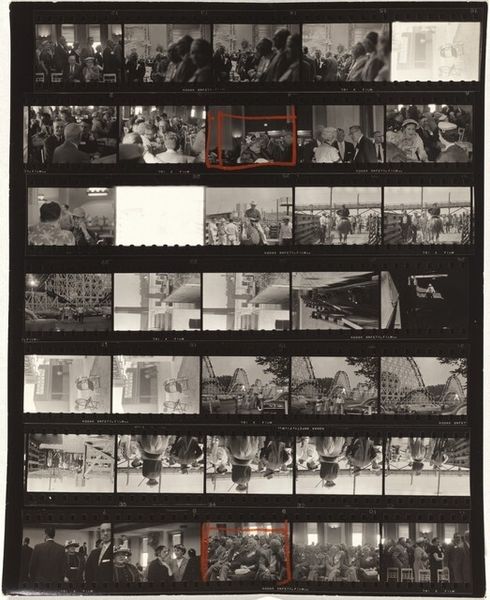
Guggenheim 564--Swimming pool, Hollywood Hills, Los Angeles 1955 - 1956
0:00
0:00
photography, gelatin-silver-print
#
sculpture
#
landscape
#
street-photography
#
photography
#
gelatin-silver-print
#
pop-art
#
cityscape
#
modernism
Dimensions: overall: 25.3 x 20.5 cm (9 15/16 x 8 1/16 in.)
Copyright: National Gallery of Art: CC0 1.0
Curator: Robert Frank created this contact sheet between 1955 and 1956 titled "Guggenheim 564—Swimming Pool, Hollywood Hills, Los Angeles." The gelatin silver print provides a raw glimpse into Frank's photographic process. Editor: My immediate impression is a feeling of distance, a kind of detached observation. Even with the hint of poolside glamour, it feels strangely clinical. What strikes me most is how these fragmented views challenge our relationship with celebrity culture and accessibility. Curator: Precisely. Frank's work often highlights the contrast between the idealized image and the gritty reality. By presenting this as a contact sheet, he's deconstructing the very act of image-making, showcasing all of its imperfect frames, its false starts and reconsiderations. The subject matter—a swimming pool in the Hollywood Hills—evokes the image of wealth, privilege, and leisure, all while questioning those concepts through this medium. Editor: It’s interesting to consider how this photograph serves as a critique of the American dream, which has historically perpetuated unequal systems of race, class, and gender. The image almost denies entry, making it hard for the viewer to access, but also invites us to challenge what accessibility and entry mean, in both art and reality. By doing so, we can see that these spaces are very carefully guarded and constructed, as opposed to found in nature. Curator: Absolutely. And think about how this work challenges our preconceived notions of photography itself. He photographed marginalized groups in American society and, later in his life, he photographed his contact sheets—questioning notions of success, or a well-made photo, in art, for example. He wasn't merely documenting reality. Frank was engaging in a political act through photography, suggesting that there's beauty even in the overlooked aspects of the process, or subject of art. Editor: Ultimately, Frank forces us to grapple with the layers of perception, power, and representation. It’s a work that transcends its era, resonating even more strongly today as we continue to analyze these broader socio-political forces shaping not only art, but also our place within history. Curator: Yes. It’s a potent reminder of the complex narratives embedded in everyday images and how an art practice rooted in anti-art ethos can change our understanding of beauty and accessibility.
Comments
No comments
Be the first to comment and join the conversation on the ultimate creative platform.

